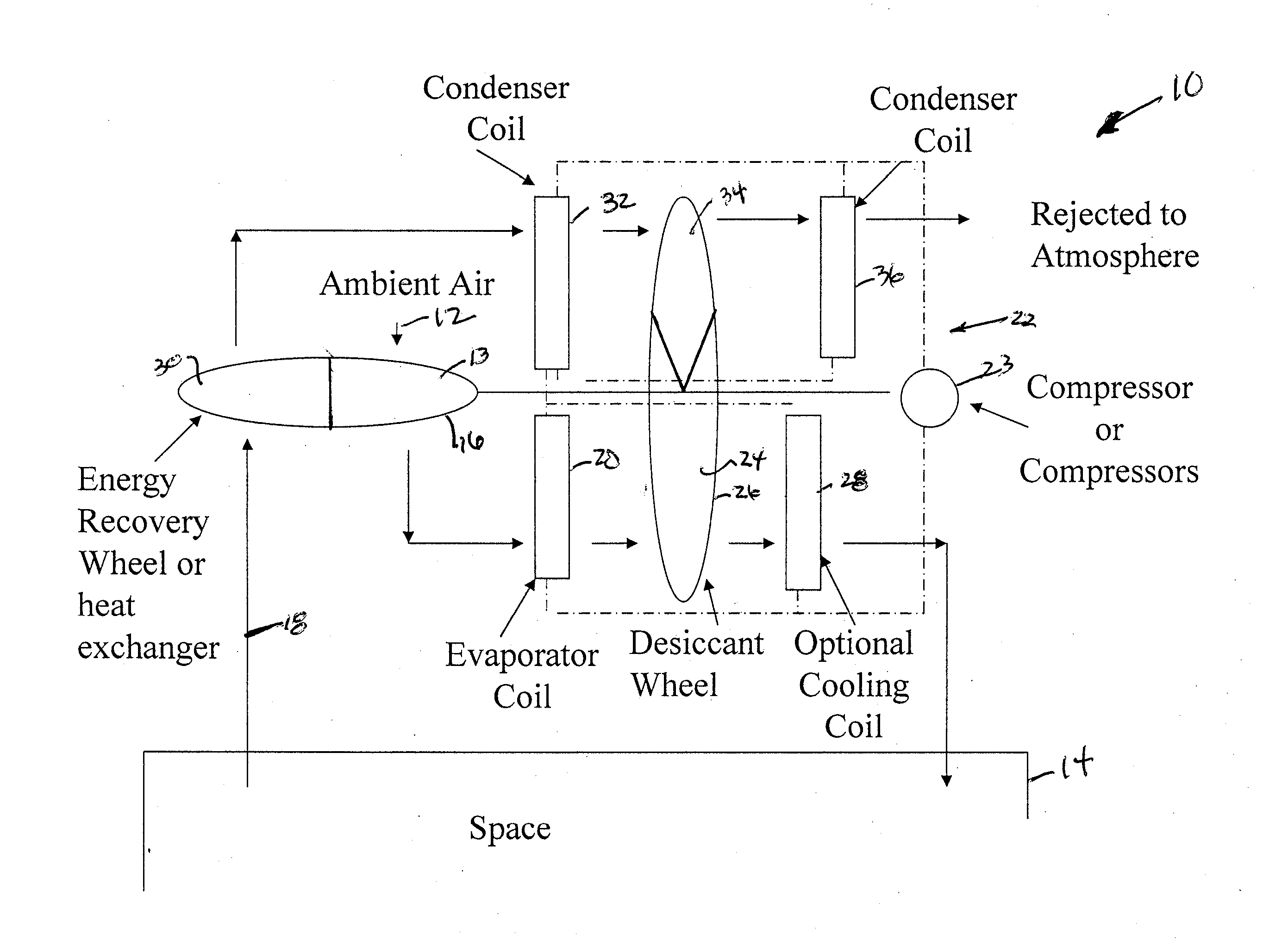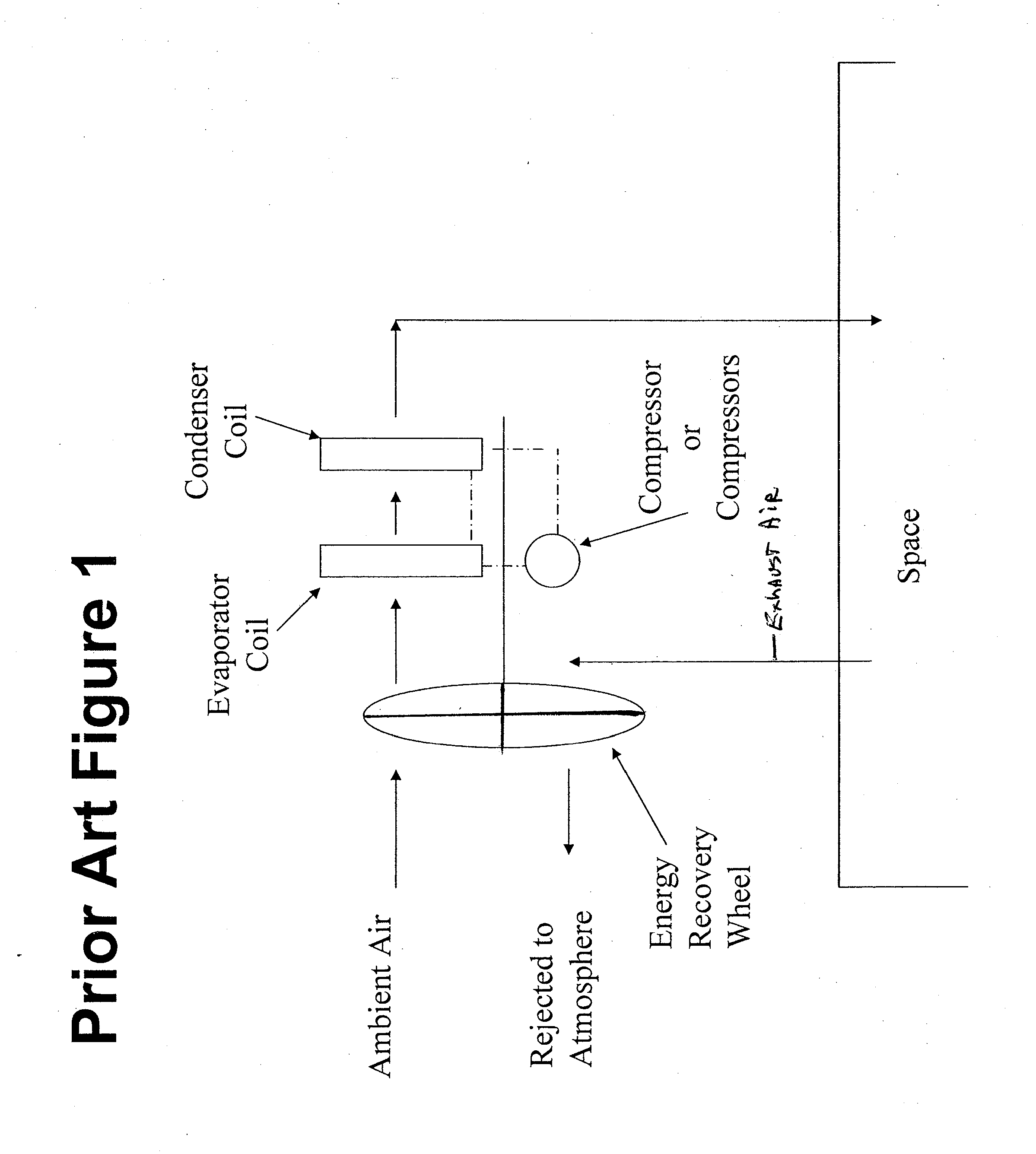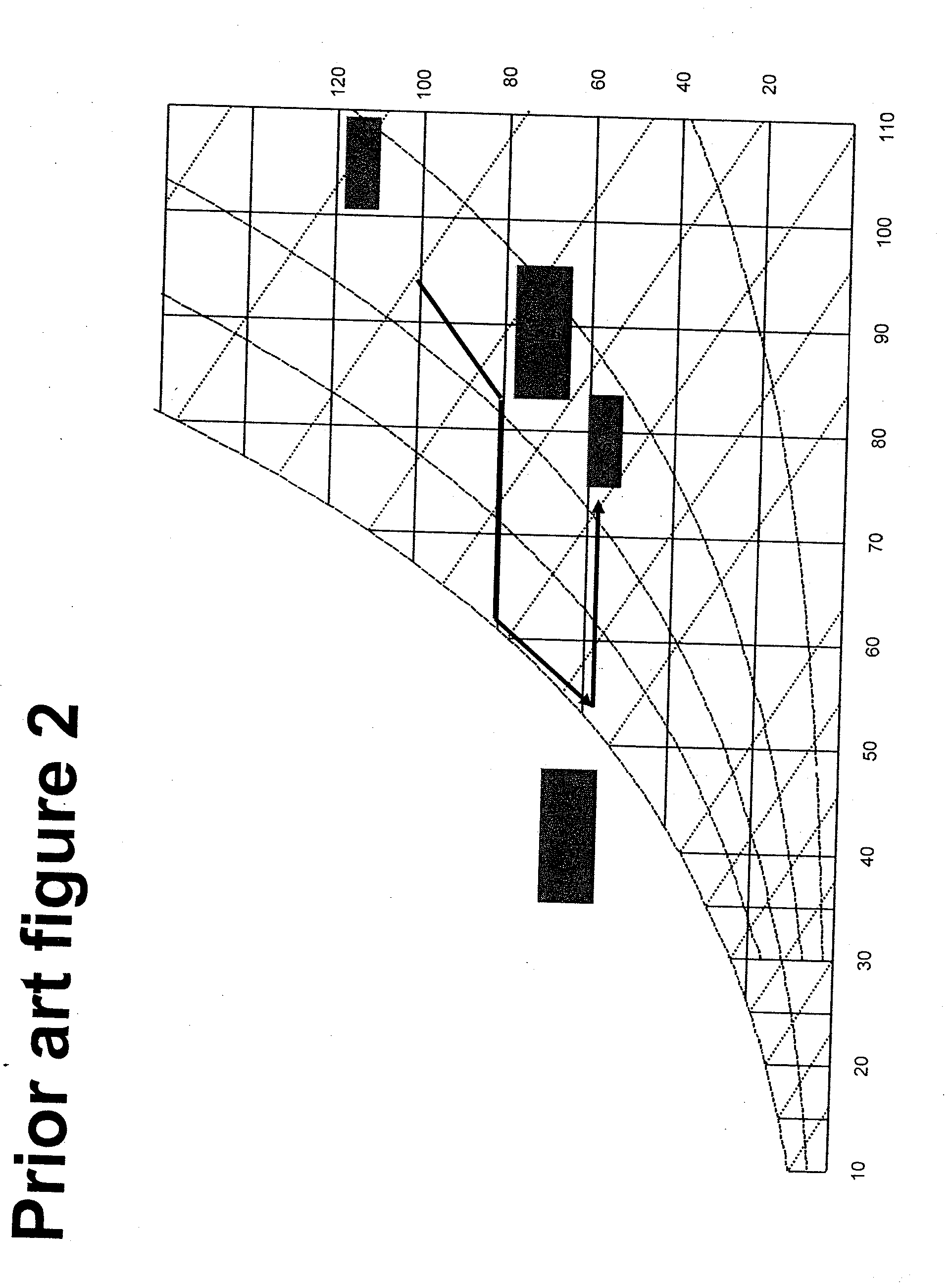Energy recovery enhanced condenser reactivated desiccant refrigerant dehumidifier
a desiccant refrigerant dehumidifier and energy recovery technology, which is applied in the field of air conditioning and dehumidification equipment, can solve the problems of ice formation problems of coil-based dehumidifier systems, and achieve the effect of reducing the required energy input and low energy consumption
- Summary
- Abstract
- Description
- Claims
- Application Information
AI Technical Summary
Benefits of technology
Problems solved by technology
Method used
Image
Examples
Embodiment Construction
[0041]Referring now to the drawing in detail and initially to FIG. 7, an air conditioning system 10 according to one embodiment of the invention is illustrated in which a stream of ambient air 12 is treated to desired temperature and humidity conditions for use in a room, enclosure or space 14. In the illustrative embodiment, the system is used in areas where the ambient outside air has a high temperature and high humidity content or ratio as described above. FIG. 7 is a schematic drawing and it will be understood by those skilled in the art that the described air streams are contained in appropriate duct work and moved with appropriate fans, which are not illustrated.
[0042]As seen in FIG. 7, fresh, outdoor, ambient supply air 12 is first passed through a section 13 of an energy recovery device 16. The air is cooled and dehumidified as it passes through the energy recovery device 16. As described above, this device may be a conventional rotating enthalpy wheel or other form of heat ...
PUM
 Login to View More
Login to View More Abstract
Description
Claims
Application Information
 Login to View More
Login to View More - R&D
- Intellectual Property
- Life Sciences
- Materials
- Tech Scout
- Unparalleled Data Quality
- Higher Quality Content
- 60% Fewer Hallucinations
Browse by: Latest US Patents, China's latest patents, Technical Efficacy Thesaurus, Application Domain, Technology Topic, Popular Technical Reports.
© 2025 PatSnap. All rights reserved.Legal|Privacy policy|Modern Slavery Act Transparency Statement|Sitemap|About US| Contact US: help@patsnap.com



